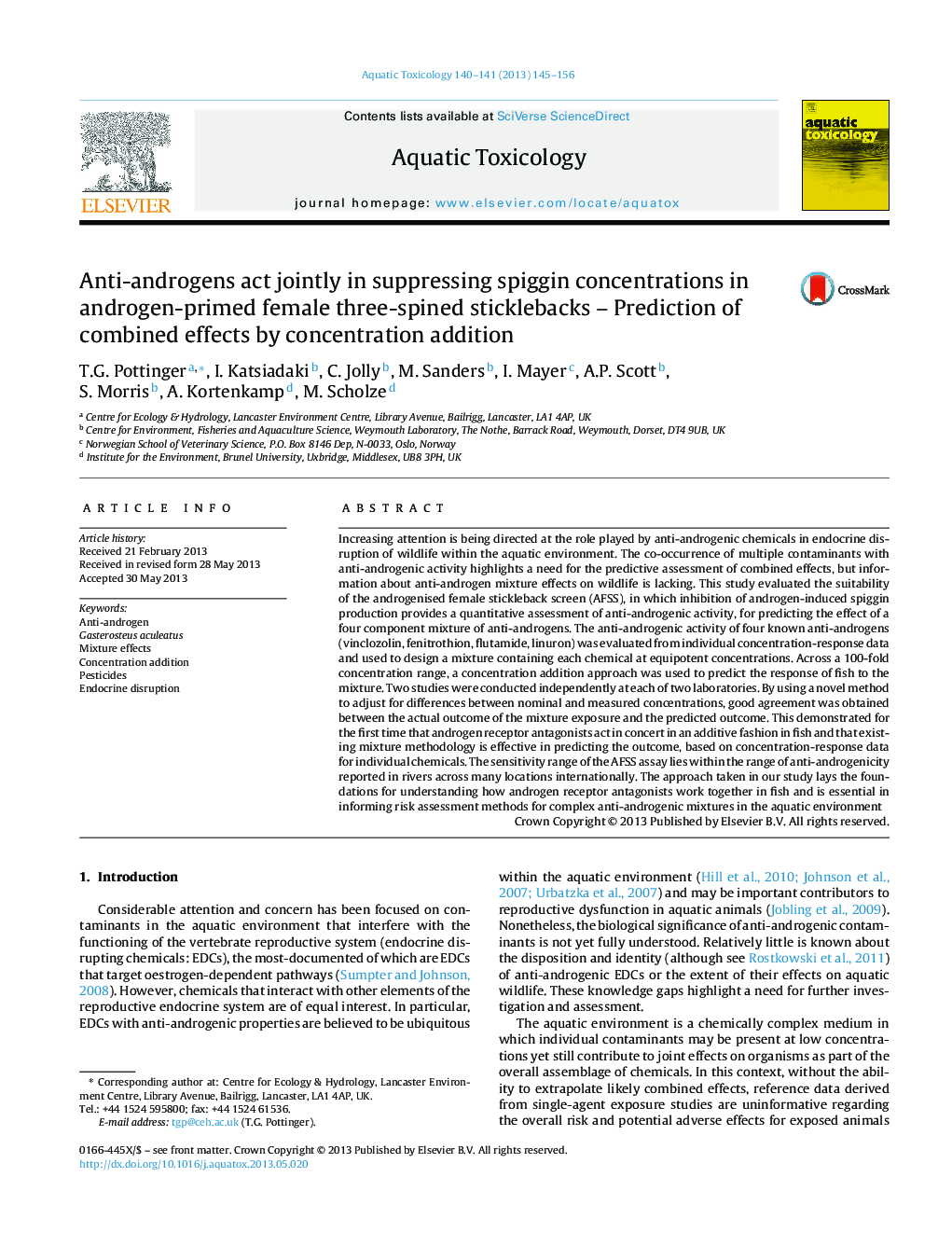| Article ID | Journal | Published Year | Pages | File Type |
|---|---|---|---|---|
| 6382501 | Aquatic Toxicology | 2013 | 12 Pages |
Abstract
Increasing attention is being directed at the role played by anti-androgenic chemicals in endocrine disruption of wildlife within the aquatic environment. The co-occurrence of multiple contaminants with anti-androgenic activity highlights a need for the predictive assessment of combined effects, but information about anti-androgen mixture effects on wildlife is lacking. This study evaluated the suitability of the androgenised female stickleback screen (AFSS), in which inhibition of androgen-induced spiggin production provides a quantitative assessment of anti-androgenic activity, for predicting the effect of a four component mixture of anti-androgens. The anti-androgenic activity of four known anti-androgens (vinclozolin, fenitrothion, flutamide, linuron) was evaluated from individual concentration-response data and used to design a mixture containing each chemical at equipotent concentrations. Across a 100-fold concentration range, a concentration addition approach was used to predict the response of fish to the mixture. Two studies were conducted independently at each of two laboratories. By using a novel method to adjust for differences between nominal and measured concentrations, good agreement was obtained between the actual outcome of the mixture exposure and the predicted outcome. This demonstrated for the first time that androgen receptor antagonists act in concert in an additive fashion in fish and that existing mixture methodology is effective in predicting the outcome, based on concentration-response data for individual chemicals. The sensitivity range of the AFSS assay lies within the range of anti-androgenicity reported in rivers across many locations internationally. The approach taken in our study lays the foundations for understanding how androgen receptor antagonists work together in fish and is essential in informing risk assessment methods for complex anti-androgenic mixtures in the aquatic environment
Keywords
Related Topics
Life Sciences
Agricultural and Biological Sciences
Aquatic Science
Authors
T.G. Pottinger, I. Katsiadaki, C. Jolly, M. Sanders, I. Mayer, A.P. Scott, S. Morris, A. Kortenkamp, M. Scholze,
